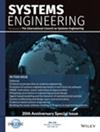基于集合的并行工程方法在金属铸造过程成本建模系统开发中的应用
IF 1.6
3区 工程技术
Q4 ENGINEERING, INDUSTRIAL
引用次数: 4
摘要
近年来,在概念设计阶段对产品成本进行可靠、准确、及时的估算可以提高铸件的竞争力。基于集合的并行工程已经成为克服这一限制的有效解决方案,因为它提供了同步设计过程,以积极地帮助设计师在短时间内以低成本实现所需的客户价值。因此,本研究试图将基于集合的并行工程方法整合到金属铸造过程成本建模系统的开发中。系统架构由用户界面、知识库和CAD建模系统组成。在基于集合的并行工程的指导下,提出了开发的成本建模系统的详细工作流程。此外,通过采用砂铸造工艺制造的实时铸件,验证了所提出的方法。该系统的实施为合作公司提供了许多切实的好处,包括成本估算时间(~ 50%)和零件废品率(~ 32.3%)的减少。此外,开发的成本建模方法提供了接近产品实际成本的成本估算(偏差约4%)。在设计阶段对产品制造成本进行准确、及时的估算,可以提高产品的竞争力,这对于实践者来说,真正证明了所开发的系统的意义。本文章由计算机程序翻译,如有差异,请以英文原文为准。
Application of set‐based concurrent engineering methodology to the development of cost modeling system for metal casting process
In recent years, the reliable, accurate, and timely estimate of product cost at the conceptual design stage can enhance the competitiveness of a casting part. Set‐based concurrent engineering has emerged as an efficient solution to overcome this limitation as it provides simultaneous design procedures to positively assist the designer in achieving the required customer values in a short time and low cost. Therefore, this study attempts to integrate the set‐based concurrent engineering methodology into the development of a cost modeling system for the metal casting process. The system architecture is comprised of a user interface, knowledge database, and CAD modeling system. A detailed working flow process of the developed cost modeling system has been proposed under the guidelines of set‐based concurrent engineering. Further, the proposed methodology is demonstrated and validated by employing a real‐time casting part that was manufactured using the sand casting process. The implementation of the system provided many tangible benefits to the collaborative company including a decrease in cost estimation time (∼50%) and part rejection rate (∼32.3%). Further, the developed cost modeling approach provided a cost estimate near the actual cost of the product (∼4% deviation). It truly proves the significance of the developed system for the practitioners who believe that accurate and timely estimates of product manufacturing cost at the design stage can enhance the competitiveness of a product.
求助全文
通过发布文献求助,成功后即可免费获取论文全文。
去求助
来源期刊

Systems Engineering
工程技术-工程:工业
CiteScore
5.10
自引率
20.00%
发文量
0
审稿时长
6 months
期刊介绍:
Systems Engineering is a discipline whose responsibility it is to create and operate technologically enabled systems that satisfy stakeholder needs throughout their life cycle. Systems engineers reduce ambiguity by clearly defining stakeholder needs and customer requirements, they focus creativity by developing a system’s architecture and design and they manage the system’s complexity over time. Considerations taken into account by systems engineers include, among others, quality, cost and schedule, risk and opportunity under uncertainty, manufacturing and realization, performance and safety during operations, training and support, as well as disposal and recycling at the end of life. The journal welcomes original submissions in the field of Systems Engineering as defined above, but also encourages contributions that take an even broader perspective including the design and operation of systems-of-systems, the application of Systems Engineering to enterprises and complex socio-technical systems, the identification, selection and development of systems engineers as well as the evolution of systems and systems-of-systems over their entire lifecycle.
Systems Engineering integrates all the disciplines and specialty groups into a coordinated team effort forming a structured development process that proceeds from concept to realization to operation. Increasingly important topics in Systems Engineering include the role of executable languages and models of systems, the concurrent use of physical and virtual prototyping, as well as the deployment of agile processes. Systems Engineering considers both the business and the technical needs of all stakeholders with the goal of providing a quality product that meets the user needs. Systems Engineering may be applied not only to products and services in the private sector but also to public infrastructures and socio-technical systems whose precise boundaries are often challenging to define.
 求助内容:
求助内容: 应助结果提醒方式:
应助结果提醒方式:


